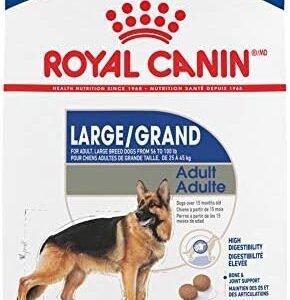In recent years, the prescription of antibiotics like clindamycin for pets surged over 70%. This highlights an increased awareness around canine infections and the need for effective treatments. Clindamycin, a potent antibiotic, is often prescribed for dogs battling various bacterial infections. This guide aims to explore the appropriate dosages of clindamycin for dogs, its action mechanism, and vital safety measures for effective treatment.
Key Takeaways
- Clindamycin is effective against a variety of bacterial infections in dogs.
- Proper clindamycin dosage for dogs is crucial for successful treatment.
- Administer clindamycin as directed by a licensed veterinarian.
- Monitor your dog for any adverse reactions during treatment.
- Consult your veterinarian for guidance tailored to your dog’s specific needs.
- Understand how clindamycin interacts with other medications your dog may be taking.
Table of Contents
Overview of Clindamycin for Dogs
Clindamycin, known by the brand names Antirobe® and Cleocin®, is a powerful antibiotic for dogs. It stops bacteria from making proteins, controlling infections. It’s especially good for skin, dental, and deep infections.
This antibiotic is safe for dogs, as confirmed by the FDA. Many pet owners prefer it for its effectiveness against a range of bacterial infections. When other treatments don’t work, clindamycin is a reliable alternative.
For certain infections, veterinarians often turn to clindamycin. Dog owners should closely adhere to the provided dosing guidelines. This care minimizes side effects and maximizes benefits for their pets.
| Feature | Details |
|---|---|
| Active Ingredient | Clindamycin |
| Brand Names | Antirobe®, Cleocin® |
| Approved Uses | Skin, dental, deep tissue infections |
| FDA Approval | Yes |
| Mode of Action | Inhibits protein synthesis in bacteria |
What is Clindamycin?
Clindamycin is a semisynthetic antibiotic, derived from lincomycin. It’s primarily effective against anaerobic bacteria. This potent medication proves useful in treating a range of infections in dogs. These include conditions like skin infections, issues in the oral cavity, and bone infections.
Understanding the right clindamycin dosage for dogs is critical. Veterinary formulations of clindamycin are available in various forms. These include capsules and oral solutions. Such variety allows for customized treatment plans, meeting the specific needs of each dog.
While clindamycin offers benefits, it’s important for pet owners to be mindful of possible side effects. The common ones are gastrointestinal disturbances, including vomiting and diarrhea. This knowledge helps in monitoring and managing the health of their pets effectively.
Veterinarians often favor clindamycin for its exceptional ability to penetrate tissues. This makes it a strong ally against difficult infections. However, a consultation with a veterinarian is essential. It ensures the development of an optimal treatment regimen, safeguarding the pet’s health and safety.
How Clindamycin Works in Dogs
Clindamycin is an antibiotic crucial for battling bacterial infections in dogs. It latches onto the bacterial ribosome, blocking protein synthesis. This process is essential, as it halts bacterial growth and replication. Consequently, there’s a reduction in bacterial population, helping the body heal faster from infections.
The drug is known for its quick absorption in dogs. This ensures they start benefiting from its therapeutic effects soon after it’s given. It’s important for both pet owners and veterinarians to grasp the clindamycin uses in dogs. Such understanding enables them to devise effective treatment strategies that cater to the animal’s unique needs.
Getting the dosage right is paramount. A detailed clindamycin dosage chart for dogs helps in determining the correct amount to administer. This is based on the dog’s weight. It assures the treatment’s safety and effectiveness.
Clindamycin Uses in Dogs
Clindamycin stands out in veterinary care, known for battling a plethora of bacterial issues in dogs. It’s critical for pet enthusiasts to grasp the distinct benefits of clindamycin. This antibiotic tackles a variety of conditions, playing a pivotal role in managing canine health.
Common Conditions Treated with Clindamycin
Vets often turn to clindamycin when addressing canine infections. It’s particularly effective for:
- Dental infections – It zeroes in on oral health complications, even those from stubborn bacteria.
- Skin infections – Clindamycin proves potent against conditions like pyoderma.
- Deep tissue wounds – It’s chosen for infections deeper within, targeting flourishing bacteria.
Comparison with Other Antibiotics
Clindamycin’s comparison with other antibiotics showcases its specific benefits. It targets certain pathogens, especially anaerobic bacteria. This precision reduces side effects common in broader-spectrum antibiotics. Here’s a comparative look with amoxicillin:
| Feature | Clindamycin | Amoxicillin |
|---|---|---|
| Type | Lincosamide | Penicillin |
| Effective Against | Anaerobic bacteria | Gram-positive bacteria |
| Primary Uses | Dental infections, skin infections | Respiratory infections, urinary tract infections |
| Common Side Effects | Gastrointestinal upset | Diarrhea, allergic reactions |
Knowledge of clindamycin’s use empowers dog owners to make well-informed health decisions. Proper treatment ensures dogs get the care they need when facing bacterial infections.
Clindamycin Dosage for Dogs: Guide
Proper dosing of clindamycin is crucial for its effectiveness and safety. The right clindamycin dosage is imperative for pet owners and vets. The dose for dogs depends on the weight of the animal. Paying attention to these details significantly impacts treatment success.
Recommended Dosage Based on Weight
The recommended clindamycin dosage for dogs is usually 5 mg per pound of body weight every 12 hours. Or, a higher dose of 10 mg per pound can be administered once daily. Consulting with a veterinarian is key to determining the optimal regimen for your dog, considering its health condition.
Dosage Forms and Administration Methods
Clindamycin comes in capsules or liquid forms. It’s best administered with water or mixed with moist food to avoid esophageal damage from dry pills. For effective treatment, consistent administration at fixed intervals is essential.
Clindamycin Dosage Chart for Dogs
It’s vital to get the clindamycin dosage right for dogs to ensure their safety and health. Dosages are determined by the dog’s weight and the condition under treatment. Here’s an in-depth chart that illustrates the advised dosages across different weight groups.
| Weight of Dog (lbs) | Daily Dose (mg) | Doses per Day | Each Dose (mg) |
|---|---|---|---|
| 5 | 25 | 2 | 12.5 |
| 10 | 50 | 2 | 25 |
| 20 | 100 | 2 | 50 |
| 30 | 150 | 2 | 75 |
| 40 | 200 | 2 | 100 |
| 50 | 250 | 2 | 125 |
This chart is a crucial tool for both veterinarians and pet owners. It ensures clindamycin is given correctly for optimal results. Always seek guidance from a vet for precise dosage based on your dog’s unique health requirements.
Administering Clindamycin to Dogs
Administering clindamycin to dogs requires following a strict schedule. This ensures the treatment’s effectiveness. Generally, clindamycin is taken every twelve hours for most infections. It’s crucial to stick to the dosing guidelines closely to avoid complications and achieve the best outcomes.
Frequency and Duration of Administration
Maintain steady drug levels in your dog by giving clindamycin every 12 hours. Treatment usually lasts from 7 to 14 days, following vet advice. It’s vital to adhere to your vet’s directions. Do not change the dosing frequency without consulting them.
Missed Dose Guidelines
If you miss a dose, give it when you remember. However, if it’s almost time for the next dose, skip the missed one. Continue with the scheduled dosing. Never double dose to prevent an overdose. By sticking to these rules, your pet benefits from the medication safely.
Potential Side Effects of Clindamycin in Dogs
When giving your dog clindamycin, knowing the possible side effects is essential. Close observation during treatment helps catch adverse reactions quickly. This ensures your dog gets the necessary vet care on time.
Common Adverse Reactions
- Diarrhea: Watery or loose stools may happen as the dog’s digestive system adapts to clindamycin.
- Vomiting: Nausea can lead to vomiting while on this medication.
- Decrease in Appetite: A marked reduction in hunger could point to a negative response to the drug.
Serious Side Effects to Monitor
There are also more severe side effects to watch for, requiring immediate vet intervention.
- Trouble Breathing: This may signal an allergic reaction needing urgent care.
- Blood in Stool: The presence of blood in stools is alarming and necessitates a quick vet check.
- Severe Lethargy: Any drastic decline in activity or responsiveness is a red flag.
Being aware of these potential reactions to clindamycin can protect your dog’s health during treatment. Consult a vet at any sign of unusual symptoms to prioritize your pet’s well-being.
Safety Precautions for Clindamycin Use
When you’re planning to use clindamycin for dogs, it’s vital to observe certain safety measures. A detailed conversation with your veterinarian about your dog’s medical history is indispensable before commencing treatment. This dialogue should cover any existing health problems and any other drugs your pet is on.
Different health conditions might require extra caution or dose adjustments of clindamycin for dogs. For instance:
- Liver disease: Dogs with liver issues may face difficulties in metabolizing clindamycin adequately.
- Kidney disease: Like liver problems, kidney concerns can affect the way clindamycin is processed in the system.
- Pregnancy or lactation: When it comes to pregnant or nursing dogs, specific precautions are essential since the medication might impact the puppies.
Being well-informed about these considerations is key to avoiding complications and ensuring clindamycin is used safely in dogs. It’s crucial to adhere to your veterinarian’s guidance on the correct clindamycin dosage for your dog and necessary follow-up during treatment.
Clindamycin Side Effects in Dogs
When using clindamycin for your dog, it’s vital to be aware of possible side effects. This antibiotic is widely used to combat various infections in canines. Knowing the potential adverse reactions is key to keeping your pet safe.
Signs of Allergic Reactions
Clindamycin can trigger allergic reactions in some dogs. Watch closely for symptoms such as:
- Severe itching.
- Swelling, especially around the face and eyes.
- Difficulty breathing or wheezing.
Immediate veterinary care is crucial if these symptoms appear. Prompt action can effectively manage these reactions.
Precautions for Pregnant or Lactating Dogs
Administering clindamycin to pregnant or nursing dogs requires caution. The impact of this antibiotic on these specific groups hasn’t been fully determined. Thus, consulting with a veterinarian is essential before starting treatment. Proper veterinary guidance is crucial for minimizing risks when using clindamycin in these delicate situations.
Comparative Analysis of Clindamycin with Similar Drugs
Comparing clindamycin for dogs with similar medications offers insights. Different antibiotics show varying effectiveness and side effects. Understanding these distinctions is key in choosing the right treatment for canine health.
Efficacy and Cost Comparison
Clindamycin is potent against some anaerobic bacteria and protozoa. Unlike amoxicillin and cephalosporins, which combat a broader spectrum but might lack specificity. Clindamycin’s affordability, priced between $0.60 to $2 per tablet, makes it a preferred choice for pet owners.
Side Effects Comparison
Each antibiotic, including clindamycin, has potential side effects. Gastrointestinal upset is common with clindamycin, while amoxicillin may cause allergies in some dogs. Therefore, evaluating the safety profiles of these drugs is critical for optimal dog health care.
Storage and Handling of Clindamycin
Storing and handling clindamycin correctly is vital for its effectiveness and safety in dogs. Proper procedures prevent the medication from losing its potency, ensuring your pet receives the right dose. Learning these storage and handling guidelines is crucial for the optimal use of clindamycin, as indicated in the dog dosage chart.
Proper Storage Conditions
Keep clindamycin in a sealed container in a cool, dry place, far from sunlight and moisture. Ideal storage conditions are essential:
- Airtight containers to avoid contamination
- Ambient temperature, preferably 68°F to 77°F (20°C to 25°C)
- Steering clear of humid areas like bathrooms or kitchens
Handling Guidelines
There are key precautions to maintain clindamycin’s integrity:
- Always wash hands thoroughly before and after applying the medication
- Keep the container’s interior untouched to reduce contamination risk
- Heed the manufacturer’s guidelines on expiration and proper disposal
By following these measures, you help keep clindamycin effective for treating your dog. Mastery of these handling and storing practices highlights responsible pet care. For dosing guidance, always consult the clindamycin dosage chart for dogs.
Importance of Veterinary Guidance
It is crucial to seek veterinary guidance when considering clindamycin for dogs. Veterinarians provide advice tailored to your dog’s health conditions. They understand your dog’s unique needs. This ensures successful and safe treatment.
Consulting Your Veterinarian
Before giving clindamycin to your dog, consulting a vet is key. They share critical information on:
- The right clindamycin dosage for your dog’s size and health.
- How clindamycin might interact with other medications your dog is taking.
- The importance of monitoring your dog to tweak dosages as necessary.
Keeping in touch with a vet ensures you make informed decisions. It also leads to better health outcomes for your dog during clindamycin treatment.
What to Do in Case of an Overdose
In the unfortunate situation of a clindamycin overdose in dogs, recognizing the symptoms early is crucial. Common signs include:
- Vomiting
- Diarrhea
- Lethargy
If you suspect your dog has received an excessive amount of clindamycin, immediate action is essential. Contact your veterinarian or an emergency animal clinic without delay. They will provide specific guidance based on your dog’s condition. Quick responses can significantly reduce the risk of severe clindamycin side effects in dogs. Remember that every dog’s response may vary, making timely professional advice vital.
Be prepared to share the dog’s weight, the clindamycin dosage for dogs administered, and the estimated time of dosage. This information will assist the veterinarian in determining the best course of action.
Understanding Clindamycin and Other Medications
Clindamycin for dogs is a strong antibiotic for treating various infections. Before starting, know how it interacts with other medications your pet takes.
Certain drugs, like neuromuscular blocking agents and particular antibiotics, can impact clindamycin’s effectiveness. This might change its efficacy or increase side effects.
For your dog’s safety, always talk about all medications with your vet. They will advise on the right clindamycin dosage and note any adverse interactions. This proactive approach ensures your dog’s health and well-being.
Conclusion
For pet owners, understanding the correct clindamycin dosage for dogs is crucial. This antibiotic is potent for treating various infections, but it has specific guidelines. There are also possible side effects to watch for. Knowing about clindamycin can help identify when your pet needs it, boosting recovery chances.
Getting the dosage right for your dog is fundamental. You must consult your veterinarian before beginning any treatment. They will consider your dog’s health, weight, and history to ensure safety and effectiveness of clindamycin.
To conclude, vet advice is key when dealing with clindamycin for your dog. Awareness of the drug’s effects and strict adherence to the treatment plan promotes a safer recovery. Monitoring for side effects is also essential in safeguarding your pet’s health.
























